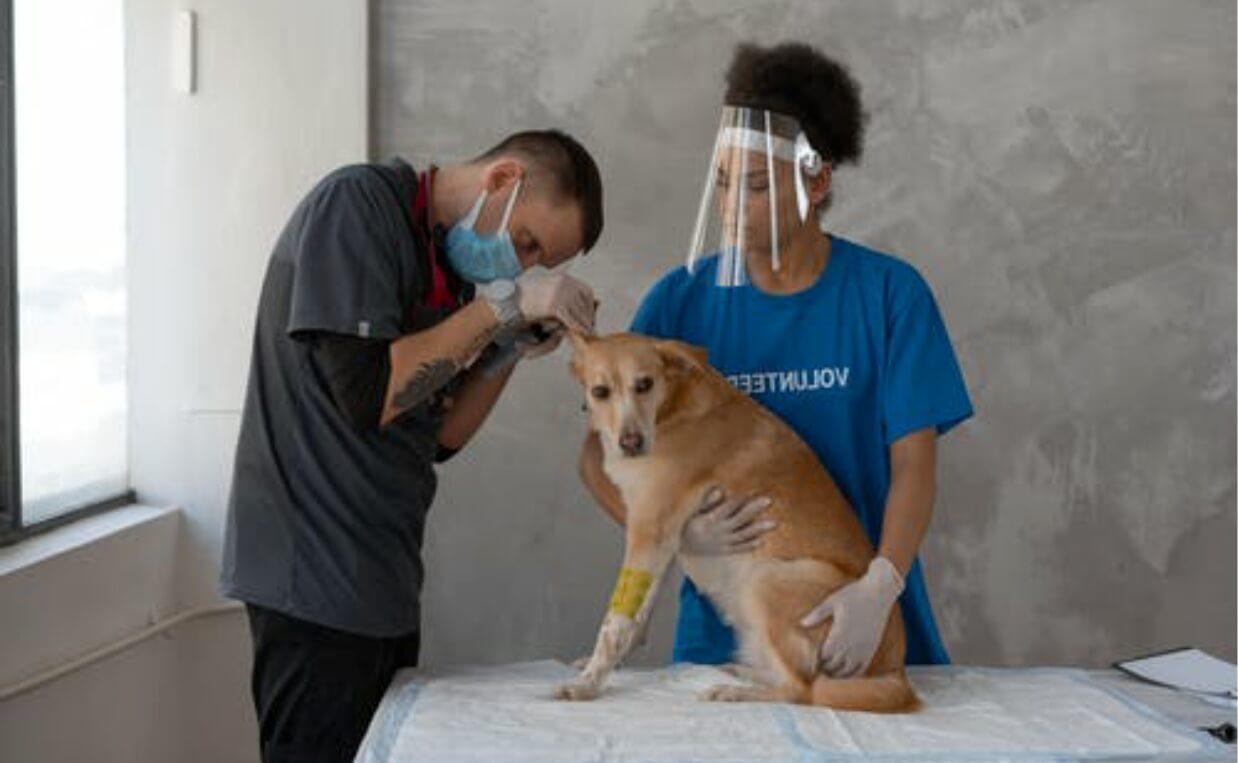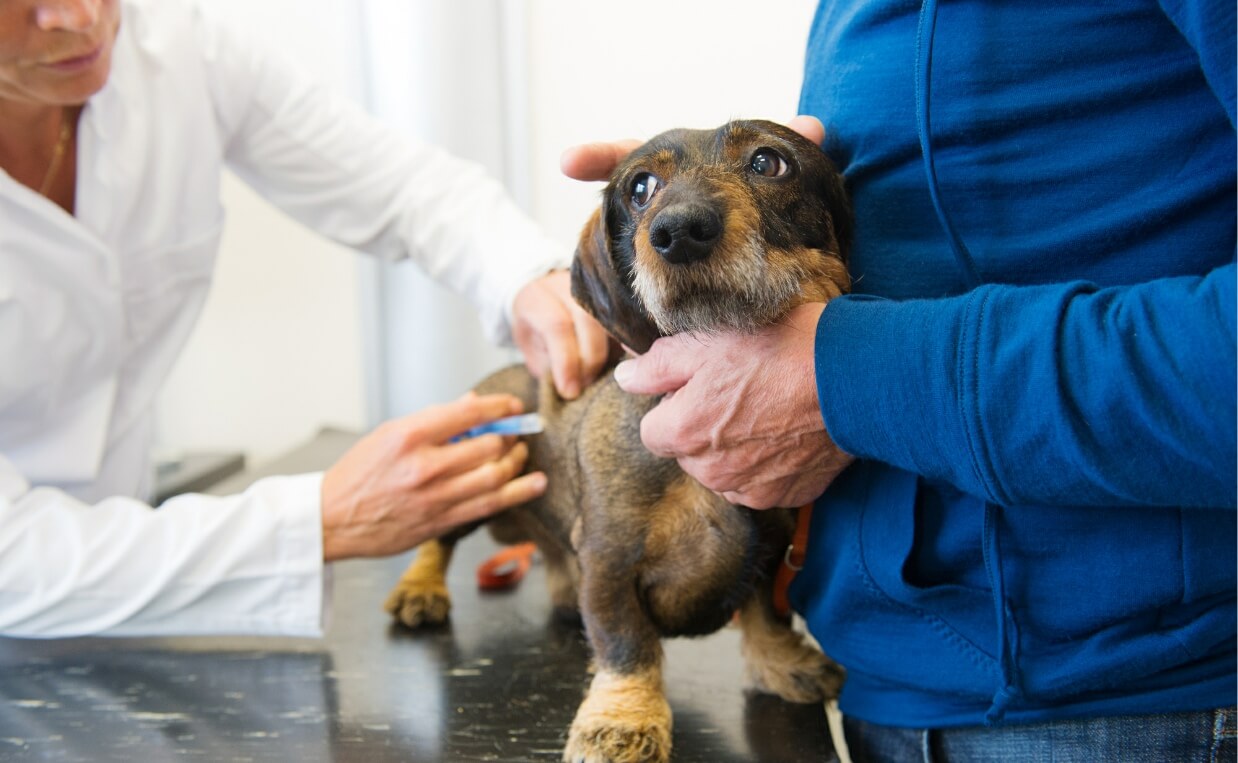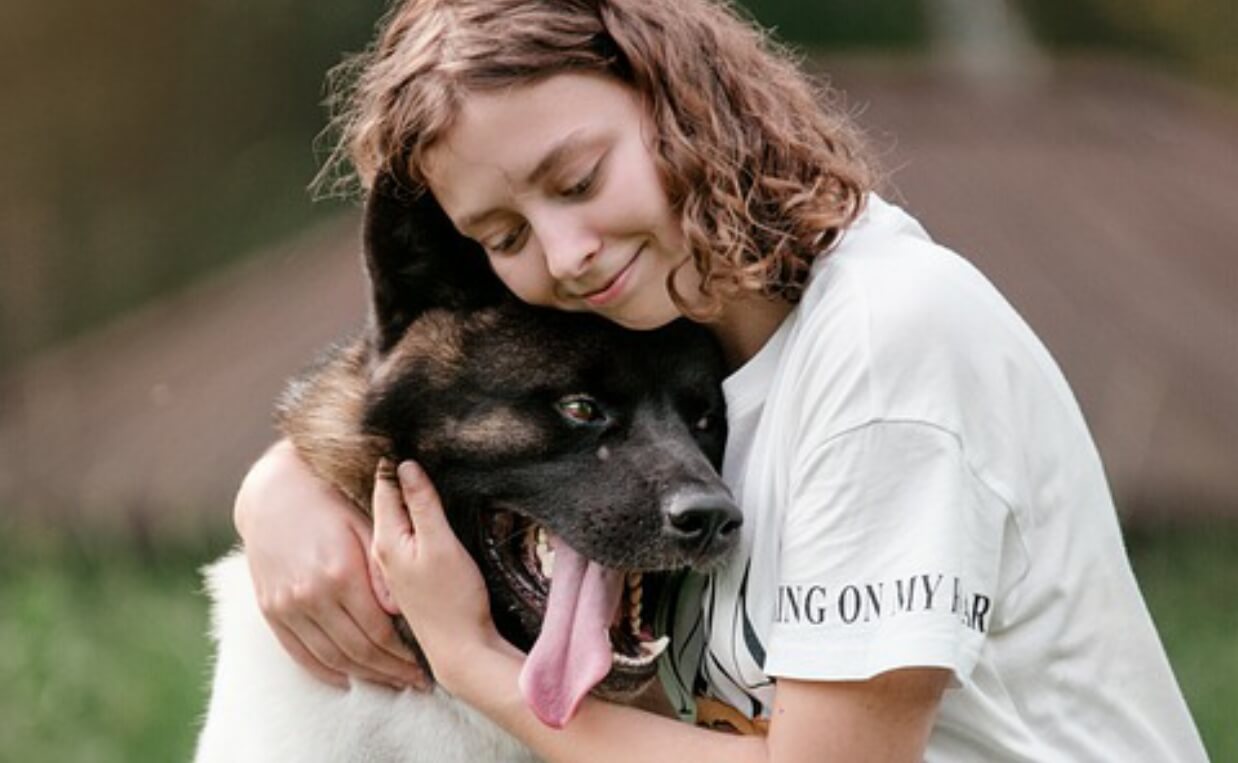
Distemper is one of the most serious diseases your dog can contract. Canine distemper is a highly contagious virus caused by the paramyxovirus. It affects the skin, brain, eyes and respiratory, and intestinal organs of dogs and puppies.
The virus can also be found in wildlife such as foxes, wolves, coyotes, raccoons, skunks, mink and ferrets and has been reported in other wild animals such as seals, lions, tigers and leopards.
Today’s blog post will cover the facts, symptoms, treatment and prevention methods every dog parent needs to know about distemper.
How is Distemper in Dogs Spread?
Puppies and dogs most often become infected through airborne exposure (usually through sneezing or coughing) to the virus from an infected dog or wild animal. The virus can also be transmitted by shared food and water bowls.
Infected dogs can shed the virus for months, and mother dogs can pass the virus through the placenta to their puppies.
Canine distemper also impacts the wildlife population, so contact between wild animals and domestic dogs can spread the virus. Canine distemper outbreaks in local raccoon populations can signal increased risk for pet dogs in the area.

Can Humans Get Distemper?
At this time, there is no known evidence humans can be infected with canine distemper. However, distemper can be spread through contact with some wildlife. Ferrets are also at risk for contracting the distemper virus and should be vaccinated if housed with or near dogs.
What Dogs Are At Risk?
All dogs are at risk of distemper but puppies younger than four months of age and dogs who haven’t been vaccinated against canine distemper are at an increased risk of becoming infected.
Signs and Symptoms of Distemper in Dogs
Infected dogs initially develop watery to pus-like discharge from their eyes.
They then develop fever, nasal discharge, coughing, lethargy, reduced appetite, and vomiting.
As the disease progresses, it attacks the nervous system. Infected dogs develop circling behavior, head tilt, muscle twitches, convulsions with jaw chewing movements and salivation (“chewing gum fits”), seizures, and partial or complete paralysis.
The virus may also cause the footpads to thicken and harden. This is why canine distemper is sometimes called “hard pad disease.”

How is Distemper in Dogs Diagnosed and Treated?
Veterinarians diagnose canine distemper through clinical appearance and laboratory testing.
There is no cure for distemper in dogs.
Dogs can survive once infected with distemper, but they will usually develop lifelong debilitating nervous system issues. Adult dogs are more likely to survive infection than puppies. The disease tends to be fatal in puppies as they are more susceptible to viral diseases.
Distemper can cause long-lasting seizures and chronic severe pneumonia which is very painful and difficult to manage.
Treatment typically consists of supportive care and efforts to prevent secondary infections; control vomiting, diarrhea and neurologic symptoms; and combat dehydration through administration of fluids.
Dogs infected with canine distemper must be separated from other dogs to minimize the risk of further infection.
A few dogs may not show any clinical signs, but they can still continue to shed the virus for up to six months.

How is Distemper in Dogs Prevented?
Vaccination is crucial in preventing distemper in dogs.
A series of vaccinations is administered to puppies to increase the likelihood of building immunity when the immune system is not yet fully matured. These vaccines are given to puppies along with other routine vaccines at 8, 12 and 16 weeks of age.
It is critical dog parents avoid gaps in the immunization schedule and make sure distemper vaccinations are up to date.
Avoid contact with infected animals and wildlife.
Use caution when socializing puppies or unvaccinated dogs at parks, puppy classes, obedience classes, and other places dog come in contact with each other.

How Common is Distemper in Dogs?
Canine distemper is still seen worldwide. Thankfully, it is less common since the widespread use of vaccinations since the 1970s. It is still seen in populations where vaccination rates are low and in stray dogs.
The virus persists in dogs who have recovered and in wildlife, especially skunks and raccoons.
It is essential to keep vaccinating our dog population to prevent canine distemper from returning as a major killer of dogs.
By following the above steps, you can keep your dog safe from distemper. If you have more questions about distemper in dogs, call your veterinarian.
If you suspect your dog might be showing symptoms of distemper, be sure to contact your veterinarian.

 What You Need to Know About Trazodone for Dogs
What You Need to Know About Trazodone for Dogs Tick-Borne Diseases in Dogs – Symptoms and Treatment
Tick-Borne Diseases in Dogs – Symptoms and Treatment 8 Trustworthy Tips for Selecting the Right Dog Food
8 Trustworthy Tips for Selecting the Right Dog Food Top 6 Reasons to Spay or Neuter Your Dog
Top 6 Reasons to Spay or Neuter Your Dog Is RoundUp Weed Killer Safe for Dogs?
Is RoundUp Weed Killer Safe for Dogs?






Leave a Reply